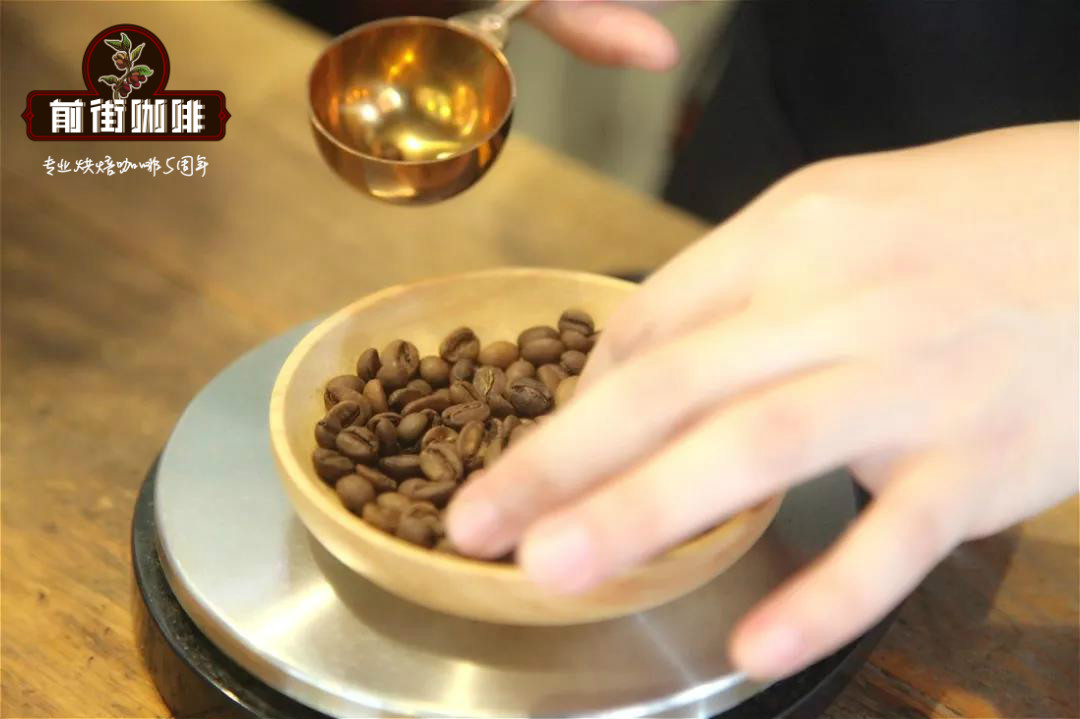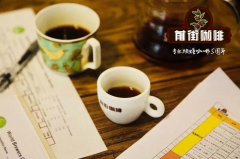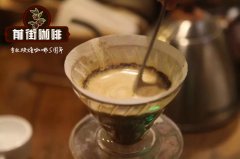How to make coffee by hand? how long does it take to brew coffee by steaming and pouring water? is it good?

Professional coffee knowledge exchange More coffee bean information Please pay attention to coffee workshop (Weixin Official Accounts cafe_style)
In recent years, hand-brewed coffee has slowly become popular in Taiwan. In the era when all kinds of coffee machines are blooming everywhere, the hand-brewed coffee with simple appliances and exquisite touch skills is like a pure stream returning to nature. It has expanded from Japan, which pursues exquisite culture, and has fascinated many coffee experts and life experts. Why is coffee hot? What's the key to a good cup of hand-brewed coffee? In this article, we will introduce you to the complete knowledge of hand brewing coffee, so that you can make good coffee at home.
Introduction: Basic knowledge of hand-brewed coffee
What is hand brewed coffee?
Hand brewed coffee, as its name suggests, is poured hot water on coffee powder, through filter paper and filter cup extraction coffee, the whole brewing process about 3 to 4 minutes. Because the flow rate, direction and temperature of hot water are controlled by the brewer, the coffee flavor is different almost every time. Although the equipment is simple, it is very particular about the technique and experience.
Hand-brewed coffee teaching
Hand coffee making apparatus
Hand washing pot: There are various sizes and materials of hand washing pot on the market, which can be selected according to demand. It is the size of the pot that affects the brewing results, because it is related to the yield. Beginners are generally recommended to use a small mouth pot (as shown below), which is easier to control. In addition, each kind of hand washing pot suitable for heating different ways (induction cooker or gas stove), buy special attention. (Photo credit: Pchome)
Filter cup: filter cup size and material are also different, mainly divided into fan, cone and wave filter cup three shapes. The size of the filter diameter at the bottom of the filter cup will affect the flow rate of coffee extracted, and thus affect the flavor of coffee. Fan filter cup filter diameter is small, flow rate is slow, taste is mellow; conical filter cup filter diameter is large, flow rate is fast, taste is lighter; wave filter cup has flat bottom, with special wave filter paper, filtered coffee taste is the most uniform. More special is the metal filter cup, do not need to use with filter paper, can retain more coffee oil, taste stronger, but some fine coffee powder may not filter out.
Filter paper: Different filter cups have their own suitable filter paper. Filter paper can absorb some of the impurities and oils of coffee, and unbleached filter paper may have some paper flavor.
Bean grinder: freshly ground coffee is the freshest, coffee powder particle size and uniformity is also the key to affecting the flavor of hand-brewed coffee, suitable for hand-brewed coffee powder particles about the size of sugar No.2, the more uniform the particles, the better the taste of the coffee.
Coffee pot and coffee cup: used to hold filtered coffee, preferably warmed to maintain coffee temperature.
Auxiliary equipment: electronic scales, thermometers and timers can make the brewing process more accurate.
Hand brewed coffee in the process of extracting coffee quickly
Characteristics of hand brewed coffee
Fast and efficient extraction: Compared with other coffee brewing methods, hand-brewed coffee continues to have fresh hot water through the coffee powder during the extraction process, and the extraction speed is faster, and more substances can be extracted from the coffee surface. But also because of the speed, if the control is not good, it may be extracted excessively. This principle is the same as frying fish in a pan with high heat. The fish has a large heating area, but it may be burnt if it is not well controlled.
There are many influencing factors: although it is only a few minutes, the flow rate of water, water temperature, coffee powder particles, filter cup shape, etc. will affect the final flavor of coffee, and sufficient research and preparation are needed before brewing.
Coffee flavor diversity: coffee flavor under different conditions are not the same, different types of beans suitable for different conditions.
Seeing this, you may feel that making coffee by hand is complicated and skillful, and it seems that it is not so easy to get started. Sure, making coffee by hand is harder than making coffee in a coffee machine, but like buying your own flour and kneading dough, you can control every detail yourself, and the final coffee flavor is naturally unique. And by tweaking the various variables, you can experiment with every possible flavor of coffee, which is what makes hand-brewed coffee fascinating!
Are you excited? Even better, we'll tell you that it's not hard to make coffee by hand.
Advanced Chapter: Easy to Master Hand-brewed Coffee
People who are just beginning to know how to make coffee by hand are often frightened by the variety of appliances and precautions. Just the jug and filter cup don't know where to start. In fact, different hand brewing conditions have their advantages and disadvantages, everyone's preferences are also different, compared to the different opinions of various experts around, we suggest that you understand the principle of hand brewing coffee, in order to really understand how to make a cup of coffee that suits your taste.
Coffee's special flavor
How to make coffee by hand
The so-called brewing coffee is actually the process of extracting molecules from coffee cells, and this process includes the following three steps: wetting, dissolution, and release. These three steps occur successively and affect each other, and finally produce the special flavor of coffee. We will explain them one by one:
Step 1: Wet
Literally, coffee powder wets when it hits water, which is the starting point for coffee cells to release molecules.
It should be noted that roasted coffee beans are full of carbon dioxide, and the fresher the coffee beans, the more carbon dioxide they contain. When the hot water touches the coffee powder, the carbon dioxide will run out first, forming a layer of bubbles on the surface, and when the hand is washed, you will see that the coffee powder in the filter cup begins to expand (as shown below). The coffee cell is like a supermarket that many people want to squeeze out of, and people outside can't get in at all-similarly, hot water outside the cell can't get into the cell. Therefore, after wetting the coffee powder, we will stop injecting water, wait for the carbon dioxide to be completely released, and then continue to heat the water after the coffee powder stops expanding, in order to achieve a better extraction effect.
When hot water touches coffee powder, carbon dioxide will run out first, forming a layer of bubbles on the surface.
Step 2: Dissolve
The process by which soluble molecules in coffee cells dissolve in hot water. This is the most important step in determining the flavor of coffee extracted.
Coffee beans are two-thirds made up of insoluble cellulose, and one-third are soluble odor molecules that dissolve out in order of molecular size when exposed to water. The first small molecules to be dissolved include acids and aromas, then medium-molecular sweetness, and finally macromolecules of burnt bitterness, which is how coffee tastes at different levels. Therefore, if you prefer a sweeter taste, the extraction time should be shorter, because the longer the hot water stays on the coffee powder, the more bitter molecules will be dissolved.
Step 3: Diffusion
After the odor molecules dissolve, they leave the coffee cells by osmosis, a process known as diffusion. The odor molecules diffuse into hot water to form the final coffee extract.
coffee extraction
Factors affecting hand-brewed coffee
After understanding the principle, you should be able to understand the impact of different hand brewing conditions on coffee flavor, all different variables are actually around a core: extraction time, that is, the coffee powder and hot water action time. Here are some important variables:
Coffee powder particle uniformity: fine coffee powder extraction speed is fast, coarse coffee powder extraction speed is slow, and the complete extraction time required is different. If the powder particles are not uniform, it is possible that the fine coffee powder has begun to release bitter molecules, and the coarse coffee powder has not been completely extracted, resulting in a poor final coffee flavor. Coffee powder particles uniform will not have this problem.
Coffee powder particle size: The finer the coffee powder, the longer the hot water flows through the coffee powder.
Filter paper thickness: The thicker the filter paper, the slower the flow rate of the extract, the longer the time for hot water to interact with coffee powder.
Water injection speed and method: water injection is uniform and stable, so that the coffee powder extraction speed is consistent. In addition, the height of the water injection will also affect the water temperature, it is recommended to close to the filter cup as much as possible, in order to repeatedly circle the way water injection. (Image source: reddit)
Water temperature: The higher the water temperature, the faster the extraction speed. It is generally recommended that deep-roasted coffee beans be brewed at 80~90 degrees, and light-medium roasted coffee beans should be brewed at 90~97 degrees.
Most of these variables have no standard, because everyone likes coffee taste is different, how to adjust different variables, rush out their favorite taste, is the most interesting place of hand-brewed coffee. For example, if you want a bitter coffee, you can use finer coffee powder, higher water temperature, or longer water injection time to achieve the desired taste.
How to Make Coffee at Home
hand-washed coffee
After understanding the background knowledge, the next step is to implement it. Below we list the detailed steps and precautions for hand brewing coffee:
Ground coffee beans: The standard particle size is like No. 2 granulated sugar, which can be adjusted. The key point is that the particles should be uniform. The fine powder can be screened out with a sieve to avoid being filtered. The amount of coffee powder is about half to two-thirds of the filter cup. Too little can not control the hot water flow rate. Too much can fill up when brewing.
Boiling water: The standard powder-to-water ratio is about 1:16, which can also be adjusted according to personal preference. The suitable water temperature is about 90 degrees, which can be measured with a thermometer after boiling.
Preheating: fold the filter paper so that it is flat on the filter cup, first soak the filter paper with some hot water and preheat the filter cup, so that the paper smell of the filter paper can also be eliminated. Pour the water away after preheating.
Put powder: Pour coffee powder into filter cup and pat the side of filter cup to make coffee powder surface slightly flat.
Start timing, the first water injection: close the spout to the edge of the filter cup, start filling from the center of the filter cup, circle around the center to the periphery and then circle back to the center, soak all the coffee powder and then stop, pay attention to not too much water. At this time, white bubbles will be produced on the surface of the coffee powder and begin to expand.
Steaming: Wait for the coffee powder to stop expanding, about 30 to 40 seconds, when some of the extract may have begun to filter out.
Second water injection: When you see that the foam begins to collapse, start the second water injection, and repeat the circle from the center, and continue to inject water evenly. This injection takes more than 2 minutes, depending on the expected brewing time (2 minutes to 2 ½ minutes for dark roast beans and 2 minutes to 3 minutes for light medium roast beans are generally recommended).
Let stand: After stopping the water injection, wait 20-60 seconds for filtration, and then pour the coffee into the coffee cup.
Enjoy coffee with a unique flavor. Finally, let's watch the instructional video!
Making coffee by hand is not just brewing coffee, it is also an art worth cultivating. After more than 50 years of research and development, the Japanese have already regarded hand-brewed coffee as a cultivation knowledge like tea ceremony. After reading this article, are you excited too? Step into the secret palace of hand-brewed coffee together and rush out your own coffee bar!
Important Notice :
前街咖啡 FrontStreet Coffee has moved to new addredd:
FrontStreet Coffee Address: 315,Donghua East Road,GuangZhou
Tel:020 38364473
- Prev

What are the flavor characteristics of coffee beans? what are the varieties of coffee beans with strong flower smell? how do they behave?
Professional coffee knowledge exchange more coffee bean information please follow the coffee workshop (Wechat official account cafe_style) Flower coffee beans are: Yega Fichel, Yega Sherfield Red Cherry, Rose Summer in Rose Village, Costa Rica Red Wine Sun, Hawaii Kona, Kenya Asali, Panama Red Rose Summer, Panamanian Green Standard Rose Summer, Panamanian Flower Butterfly, Guatemala Polsa
- Next

How to brew coffee without acid Hand brewed coffee powder Coarse brewing time on the flavor of the impact
Professional coffee knowledge exchange More coffee bean information Please pay attention to coffee workshop (Weixin Official Accounts cafe_style) Drinking coffee has become a living habit of modern people, but how to make a cup of fragrant coffee by hand? Chen Huihuan, champion of the 2016 Taiwan Hand-brewed Coffee Competition, demonstrated the use of trapezoidal filter cups for hand-brewed coffee and taught tips so that people can easily enjoy fragrant hand-brewed coffee at home. Taiwanese people's
Related
- Beginners will see the "Coffee pull flower" guide!
- What is the difference between ice blog purified milk and ordinary milk coffee?
- Why is the Philippines the largest producer of crops in Liberia?
- For coffee extraction, should the fine powder be retained?
- How does extracted espresso fill pressed powder? How much strength does it take to press the powder?
- How to make jasmine cold extract coffee? Is the jasmine + latte good?
- Will this little toy really make the coffee taste better? How does Lily Drip affect coffee extraction?
- Will the action of slapping the filter cup also affect coffee extraction?
- What's the difference between powder-to-water ratio and powder-to-liquid ratio?
- What is the Ethiopian local species? What does it have to do with Heirloom native species?

